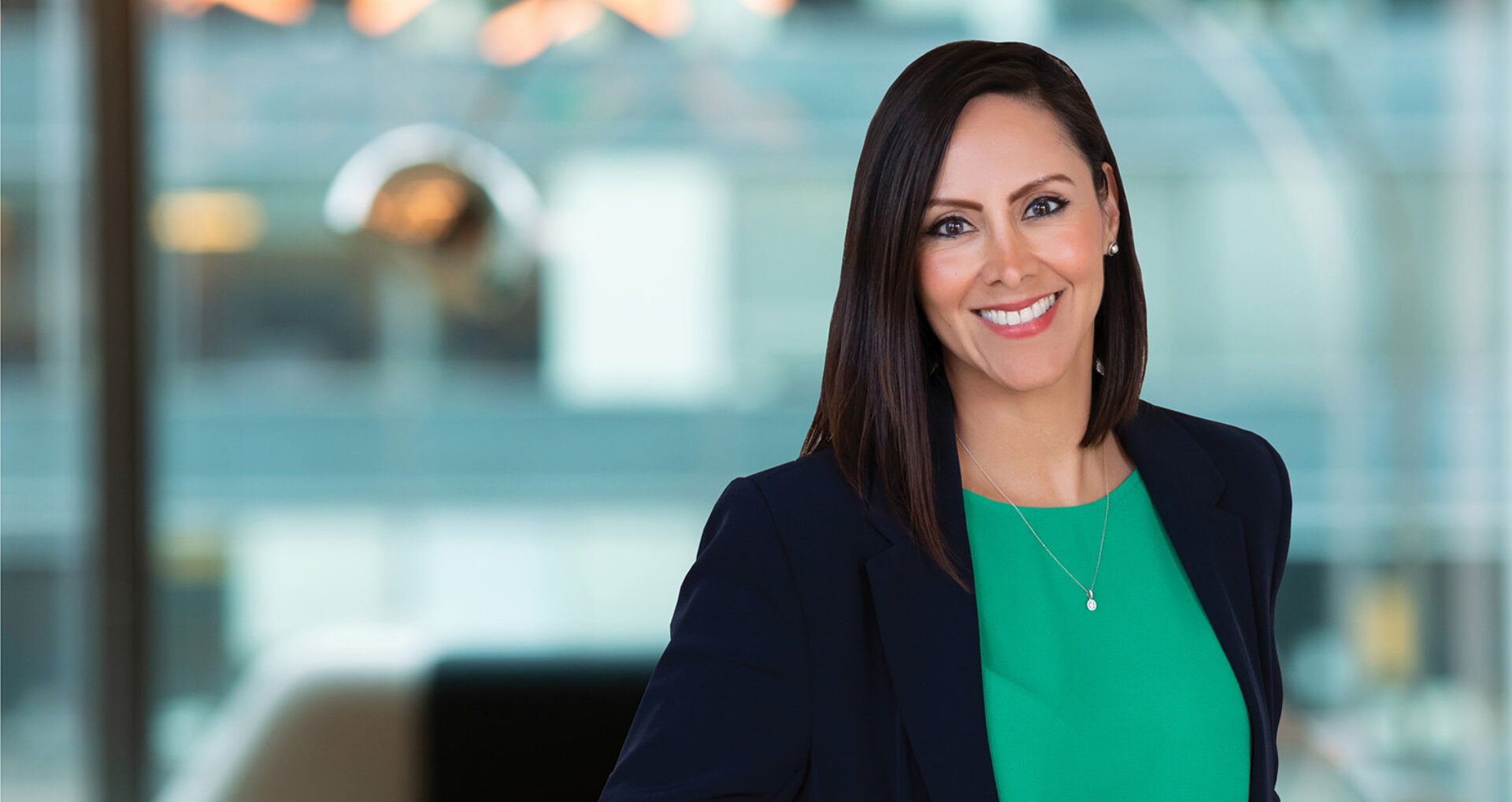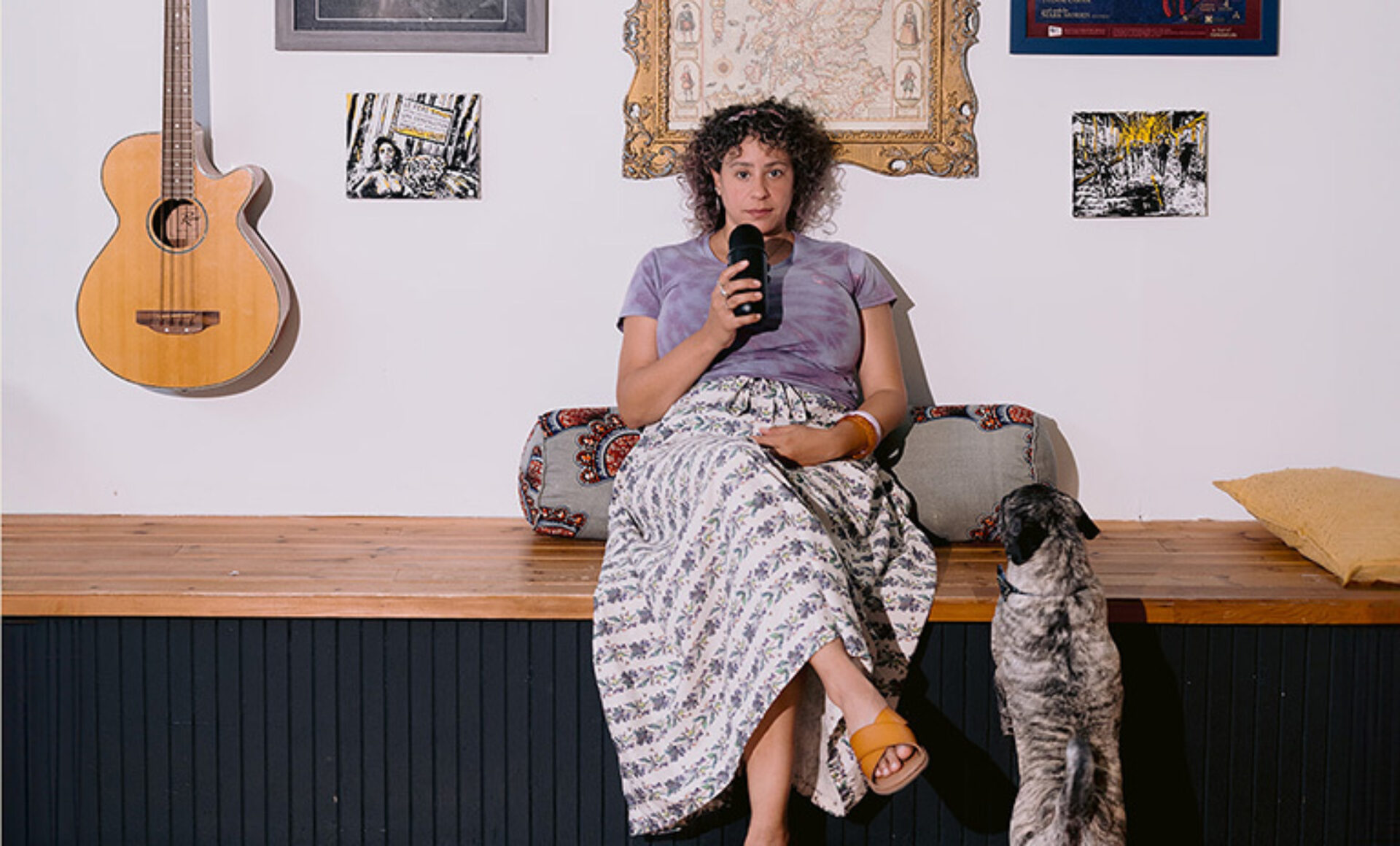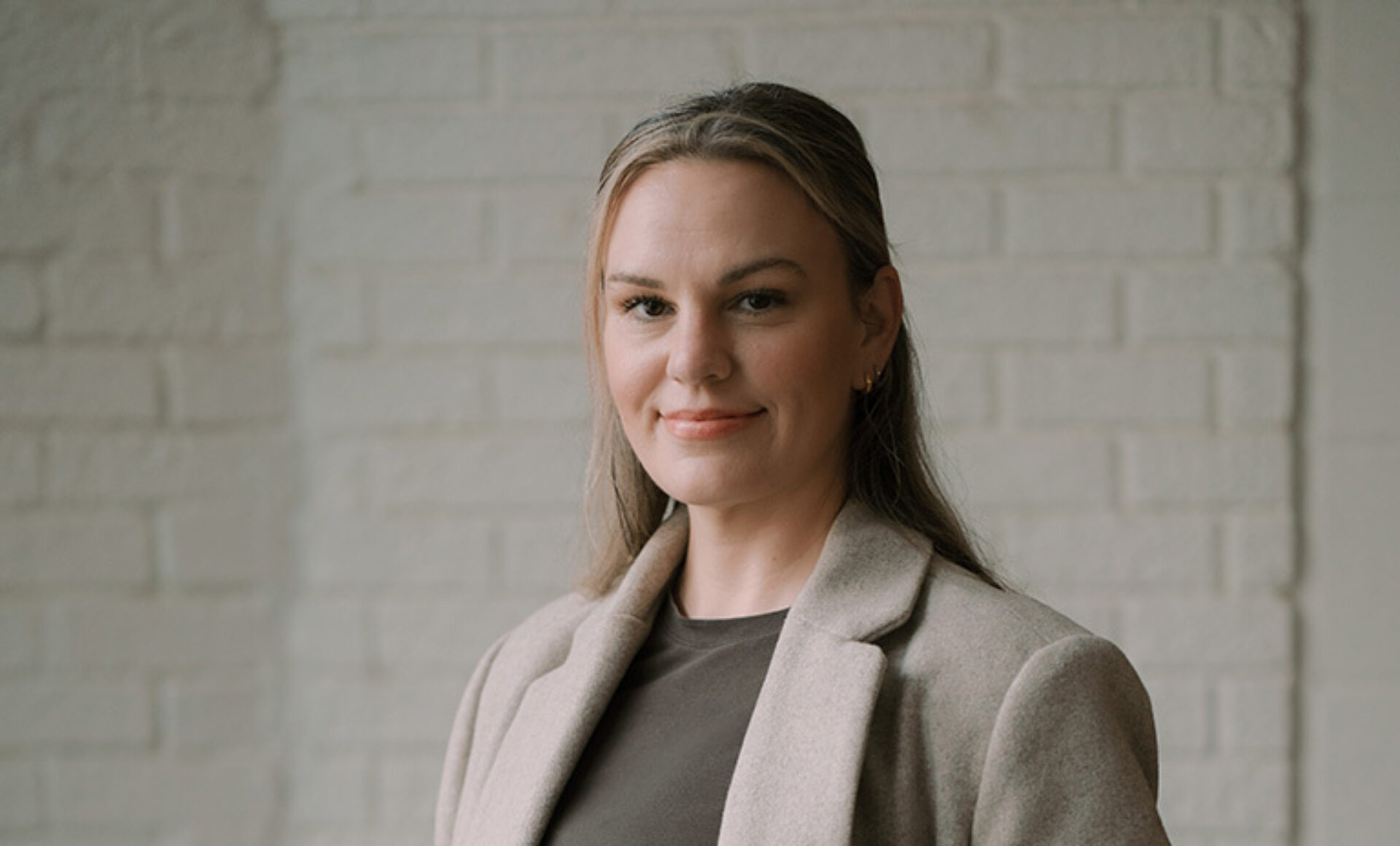This story is the final profile in our three-part 2024 Hispanic Heritage Month profile series. Read the first and second profiles.
Life is funny—something as small as a chance encounter, an introduction to a piece of art, or a stray word of advice can set a person’s career trajectory in motion.
For Ursula Finley, it all began with a construction site.
Finley, IIDA, spent a stretch of her adolescence in Vienna (among several other places; more on that later), and often visited the city center with her father. “There was this construction site right there, right across from Stephansdom”—Austria’s historic St. Stephen's Cathedral—“and every time we went downtown, I was seeing how that evolved, and it just was so fascinating to me,” she said. When the new building was completed, the result was a striking juxtaposition, “contrasting the modern design with the historic cathedral just across from it,” Finley said.
She was 11 or 12 at the time. And she was transfixed.
“My dad was an engineer, and he was always, I think, leaning me toward studying engineering.” But she was more intrigued by watching that structure come alive, bit by bit. She asked her dad, “I love this. What is this? He said, ‘Well, it’s architecture. That can be a career if that’s something you want to pursue.”
Reader, she did pursue it. For college, Finley, who now lives in the Washington metro area, works as a principal and the director of interiors at AECOM’s Washington, D.C. office, and serves as president of the IIDA Mid-Atlantic Chapter, left Austria and returned to her native Peru to study architecture. It wasn’t exactly an easy move. Finley was an international kid through and through—she was born in Lima, her family moved to Austria when she was a little over a year old, relocated to Honduras when she was five, then returned to Austria, where she spent sixth grade through high school. (Her parents worked for the United Nations; hence, the global moves.)

Elliot Mandel
In her international high school, if her sister and brother missed a day, she was “the only Peruvian, and everybody else was from other countries all over the world. Not only Europe—everybody was global,” she said. “Having built those relationships with others, going to their homes and knowing that sometimes they eat something different, or we eat something different, it just opens your mind. …I always embraced it.”
She also embraced language: Finley speaks four of them (yes, four!)— English, Spanish, German, and French.
So when she got to Peru for college, “it was a tough first six months,” she said, “because I was coming from an international environment to an all-Peruvian environment where everybody spoke Spanish. And my Spanish was a very formal Spanish that I spoke at home. I didn’t know the slang and the lingo, nor the Peruvian accent. So it took me time to adjust, to absorb the cultural elements from my own country and feel that I was part of the Lima culture.” Friends jokingly called her gringa (a Spanish term that refers to a female foreigner, usually from the U.S. or U.K.).
Six months was all it took, though, “and then that was it,” she said. The pieces fell into place. “I met wonderful people that are my best friends to this day.”
Those multicultural, multi-continental, multilingual years of Finley’s adolescence and early adulthood helped shape her thinking and her work. “I think it’s made me a flexible person in terms of my design,” said Finley.
Speaking of design, her stint as an architect was meaningful—but temporary. Early in her career, she worked at an architectural practice in Florida and came across a project involving a child development center. She was randomly tasked with working on the interiors, and—suddenly—a switch flipped.
“When I started drawing these interior elevations and looking at where the children were going to wash their hands or put the toys, and the functionality of the space, it was just eye-opening,” Finley said.
She pushed herself to find ways to “help these children from the child development center feel like this is their home,” and she realized, for the first time, that interior design “can be a career.”

Elliot Mandel
“It was, I think, drawing that first elevation that made me consider interior design as my future.” The elevation that changed everything.
Finley moved from Florida to the D.C. area, sought out roles in the interior design field and hasn’t looked back since. Looking forward, she’s optimistic about the future of the industry, and of her studio.
“For design right now, I think we are all being very inclusive in terms of our clients and our projects,” she said, not only in terms of creating spaces that are functional and accessible, but that are “welcoming to all.” As she grows her design studio at AECOM, she’s focusing on building a big tent, with designers from “different levels and different universities and backgrounds. Because everybody has a unique design vision.”
At home, Finley often shares some advice with her kids that could also apply to budding designers: Ask for what you want. “You don’t know until you ask. So don’t assume that it’s a no. You really have to ask the question, and at least you tried if they tell you no. But it could be a yes, and most likely it’s a yes.”
Wise words. Always ask the question. After all, when a young Finley asked “what is this?” while staring at that construction site, she got what she wanted—and more.






